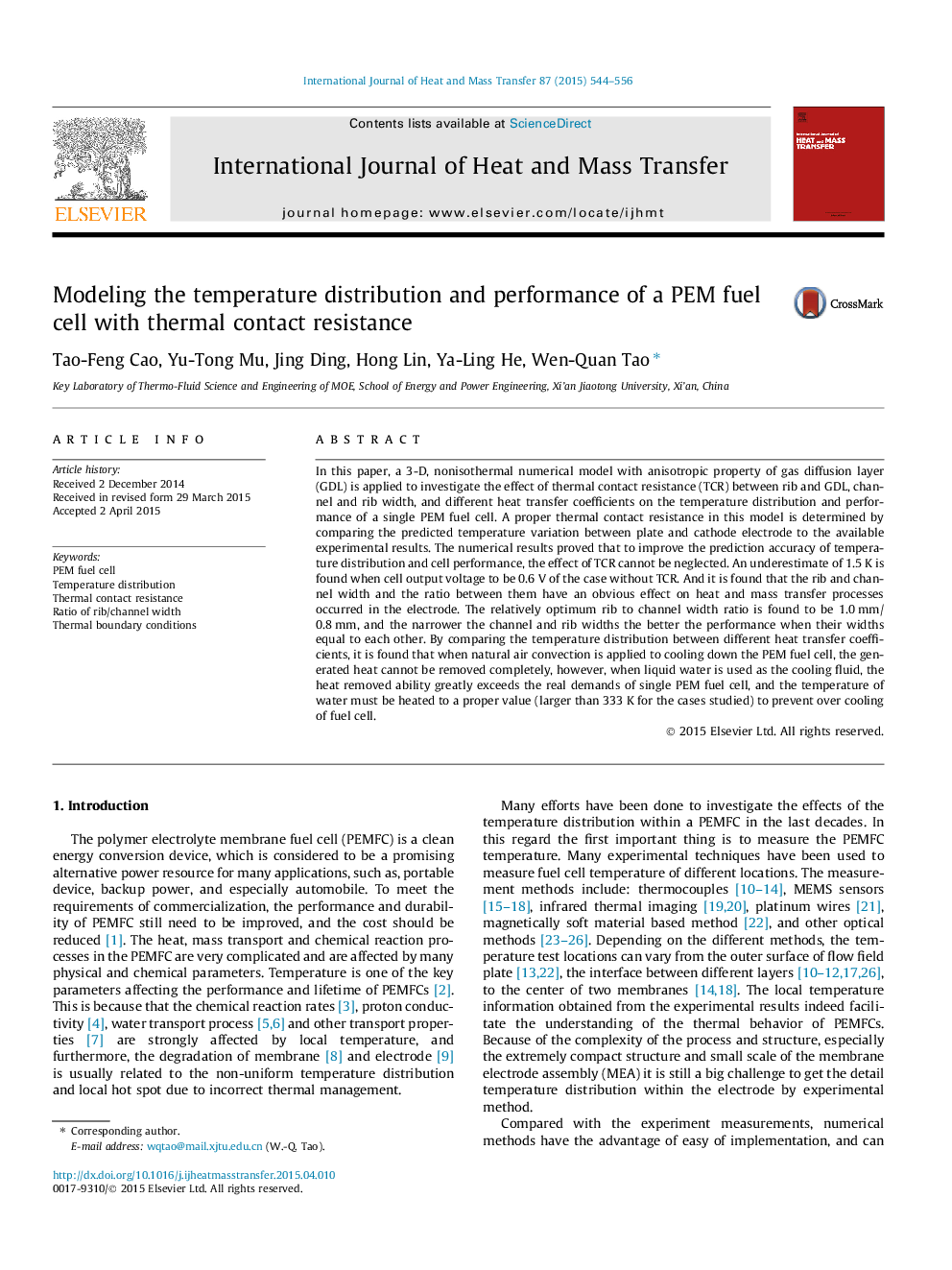| Article ID | Journal | Published Year | Pages | File Type |
|---|---|---|---|---|
| 657138 | International Journal of Heat and Mass Transfer | 2015 | 13 Pages |
Abstract
In this paper, a 3-D, nonisothermal numerical model with anisotropic property of gas diffusion layer (GDL) is applied to investigate the effect of thermal contact resistance (TCR) between rib and GDL, channel and rib width, and different heat transfer coefficients on the temperature distribution and performance of a single PEM fuel cell. A proper thermal contact resistance in this model is determined by comparing the predicted temperature variation between plate and cathode electrode to the available experimental results. The numerical results proved that to improve the prediction accuracy of temperature distribution and cell performance, the effect of TCR cannot be neglected. An underestimate of 1.5Â K is found when cell output voltage to be 0.6Â V of the case without TCR. And it is found that the rib and channel width and the ratio between them have an obvious effect on heat and mass transfer processes occurred in the electrode. The relatively optimum rib to channel width ratio is found to be 1.0Â mm/0.8Â mm, and the narrower the channel and rib widths the better the performance when their widths equal to each other. By comparing the temperature distribution between different heat transfer coefficients, it is found that when natural air convection is applied to cooling down the PEM fuel cell, the generated heat cannot be removed completely, however, when liquid water is used as the cooling fluid, the heat removed ability greatly exceeds the real demands of single PEM fuel cell, and the temperature of water must be heated to a proper value (larger than 333Â K for the cases studied) to prevent over cooling of fuel cell.
Related Topics
Physical Sciences and Engineering
Chemical Engineering
Fluid Flow and Transfer Processes
Authors
Tao-Feng Cao, Yu-Tong Mu, Jing Ding, Hong Lin, Ya-Ling He, Wen-Quan Tao,
